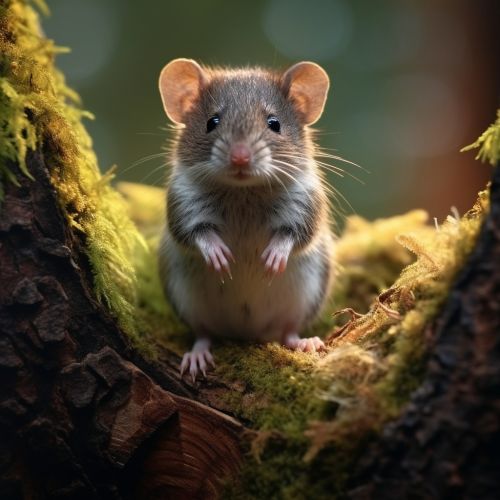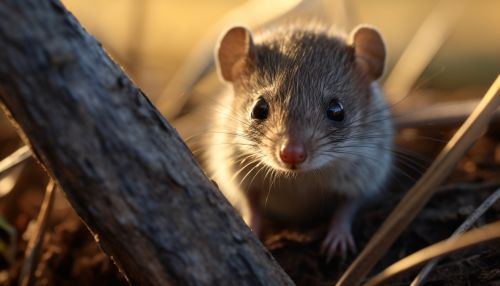Shrew
Taxonomy and Evolution
Shrews are small mammalian creatures that belong to the family Soricidae. This family is a part of the order Eulipotyphla, which also includes moles and hedgehogs. The family Soricidae is a diverse group, with over 376 species spread across 26 genera. The evolutionary history of shrews is traced back to the early Cenozoic Era, around 60 million years ago.
Anatomy and Physiology
Shrews are characterized by their small size, with most species measuring between 3 to 5 inches in length. They have a pointed snout, small eyes, and five clawed toes on each foot. Their fur is typically grey or brown in color. Shrews have a high metabolic rate, which requires them to consume food almost constantly. Their diet mainly consists of insects, worms, and other small invertebrates.


Behavior and Ecology
Shrews are primarily solitary animals and are most active during the night. They have poor eyesight but a keen sense of smell and hearing, which they use to locate their prey. Shrews are known for their aggressive behavior, often attacking animals much larger than themselves when threatened. They have a unique venomous saliva, which they use to paralyze their prey.
Reproduction and Lifespan
Shrews have a short lifespan, typically living for only one to two years. They breed once or twice a year, with females giving birth to a litter of three to ten young. The young shrews are born blind and hairless but develop rapidly, reaching maturity within a month.
Conservation Status
The conservation status of shrew species varies greatly. While some species are abundant and not considered threatened, others are classified as endangered due to habitat loss, pollution, and other environmental factors.
Human Interaction
While shrews are often considered pests due to their burrowing habits, they play a crucial role in ecosystems by controlling insect populations. Some cultures also have folklore and myths associated with shrews.
